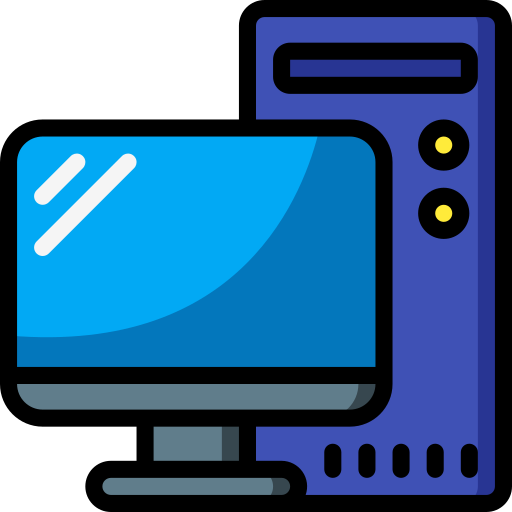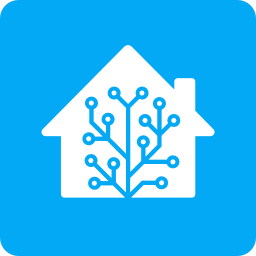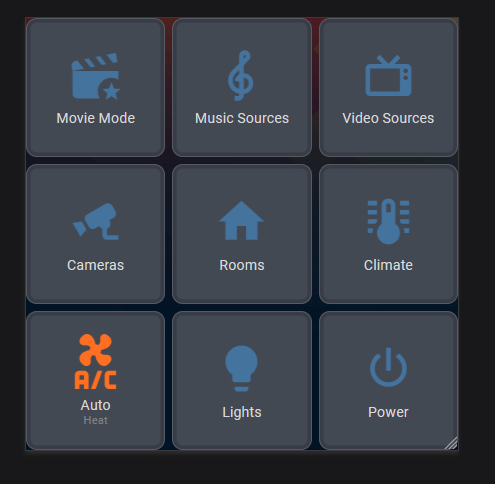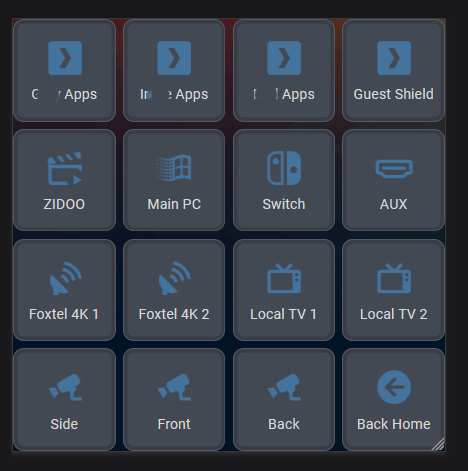you could have one plex master server accessing multiple storage servers over SMB/NFS without much hassle, that allows combined libraries and more or less seamless access if the network and connection between servers is up to scratch as it would require reasonably high bandwidth, but multiple separate servers is a bit of a pain as you cant easily combine them and you would have to have split libraries AFAIK.
Faceman🇦🇺
poop
- 0 Posts
- 145 Comments

 1·4 months ago
1·4 months agothe radxa penta is a JMB585 connected with pcie gen3x1.
They do overheat though, might need a heatsink and some ZFS tuning.

 5·4 months ago
5·4 months agoThey still push their exclusive features and services in the UI’s pretty hard, but I’m OK with that while they are making moves like this, and letting you have third party cameras mixed into their ecosystem reasonably easily.

 15·4 months ago
15·4 months agoVery happy to see this, I thought they were going to be pulling away from self-hostable and more flexible solutions a few years back when they stopped developing things like Unifi Video, but they seem to have made many positive movements towards openness, true ownership and self-hostability lately.

 1·4 months ago
1·4 months agoprobably a federation issue, if I go to my own post in Boost the images load after a second.
They arent all that impressive to look at though, it’s just a grid of buttons.

 8·4 months ago
8·4 months agoMy main dashboard is on a little 480x480 LCD android wallpanel, so I have a template that uses a grid of buttons which can perform actions themselves or navigate to and from other pages with other functions. every page uses some variation of that template, usually 9 buttons but it can be more or fewer as needed, or nesting grids within larger grids in some cases.
This main panel is in my “theatre” aka the spare bedroom I claimed for a media room, so most of the control is based around triggering actions and flows mostly orchestrated by NodeRed but a few functions are direct to HA for simpler functions. there are other pages that bring up controls for other rooms and my original plan was to put one of these panels in every room but I never really got there… one day.
I use the wallpanel addon to run screensavers, but the LCD panels also have a sensor that turns the screen off until you put your hand near it, then it wakes up to the screensaver with the weather and any warnings until you tap the screen to bring up the main page.
main page:

example source selection grid, still working on making this neater or less ugly, maybe more nested pages based on user or type or simply culling sources never uses in this particular room, though most of the time you walk up to the panel and hit movie mode on the main page, then any other switching is accessible from the remote itself.

I need a lot of selections because just this room has multiple local devices, some on the TV, some on the receiver, then some on the main HDMI matrix for the whole house, then there are a couple of IP feeds and other devices. switching and sequencing all of those steps on each device is done in Nodered, that also sends a ping to the smart remote to set it to the right mode for what is chosen and it all stays in sync if the source is changed from the remote, since it is all orchestrated in nodered… sources like the TV and Sat tuners I am working on a round robin style selection for those so you just tap it and it goes to whichever one is free or warns you if it is being used in another room, but 90% of the time only one of those is being used at any one time so that would work OK. that way I can get them down to one button.
I also have a simple phone dashboard with climate controls, sensors, status etc. that can also bring up these control panels if needed but I mostly use the dashboard on the touch panel.
Yea, JF is getting mature enough for more people to transition.
I’ve been running it side by side with Plex for about 2 years now, and have a couple of clients (and all of my personal use) on JF, but a few users either cant run JF directly on their hardware (and don’t want to cast every time) or they are older and would struggle to learn a new app without some hands on practice with it.
The newest Plex UI update on some devices is causing some problems so I think I’ll have a few more users moving to JF in the near future.
It’s a bit of a ram hog compared to plex but that’s not a major issue.

 3·5 months ago
3·5 months agounraid is great but on a little 4 bay mini nas with limited expandability you don’t get much advantage for the money, it’s better for larger arrays and lots of mixed disk sizes, and on systems where you can put in lots of SSDs to make a decently fast caching setup die to unraid slower non-striped array architecture.
On a 4 bay mini-NAS I’d go with the free truenas option and just make it a RaidZ1 of 4 disks.
For a beginner, OMV might be simpler, and for paid options, HexOS is probably more beginner friendly than raw TrueNas.
A free alternative to Unraid is Snapraid, but thats more of a roll-your-own solution, not an OS you can just install.

 19·7 months ago
19·7 months agojellyfin was a fork of emby anyway, its core framework is solid.
Emby has more of the plex-like polish, but it is more closed source than I would prefer to trust with my media, so I get by with Jellyfin. It works more than well enough fro my in-home media streaming and I still run plex for my remote users as I bought a plex pass way back at the start and I’m going to use it until I simply cant anymore… which seems to be rapidly approaching.

 7·9 months ago
7·9 months agoI never used it, but it was a popular third party add-on before the feature was integrated.

 4·9 months ago
4·9 months agoI’ve had a Lifetime PlexPass since 2013, so I’ve definitely had my moneys worth and then some, but for the last 2 years I’ve been dual wielding Jellyfin and watching it slowly get to the point where I can move over entirely.
I’m 100% Jellyfin now for my personal playback at home, and will be transitioning users over to it as soon as it gets a few more user management features for remote users.

 1·1 year ago
1·1 year agoThe best HACS addon by far in my opinion has been the Node-Red companion add on that makes combining HA with NR significantly easier and more powerful.
I do almost all of my automation in NR flows and HA is mainly API connector and dashboard frontend.
I have a customised dashboard running on a Sonoff NS panel Pro (using the normal methods to get back to stock android on those panels) I just use it as a button pad for a media room, so the dashboard is mostly just a few pages of buttons in a 3x3 grid for source selection, modes, AC and Lighting controls etc, mostly hitting triggers in Node-Red (via the HACS node-red addon) rather than directly in Homeassistant so that it’s easier to have the dashboard trigger perform a larger chain of tasks easier (in my opinion) than doing it purely in HA.
It’s not perfect… because there’s no easy way to lock a dashboard to a certain pixel height and width without a lot of tinkering with third party plug-ins and SSL.
I’ve got it working pretty well, the one gripe I have is tap and hold functions are impossible as the touchscreen seems too sensitive and there is no dead-zone control for tap and hold.
But recently i’ve programmed a new smart remote for the media room that does most of it on the remote directly, so I only use it for configuring the A/C occasionally now, when my remotes simpler on/off integration isn’t enough.

 1·1 year ago
1·1 year agoits been on the experimental branch for a while now

 11·1 year ago
11·1 year agocan you run something like iperf3 or openspeedtest between the server and client to prove its a network throughput issue?
do you have a network switch you can add to avoid switching through your router (if it is indeed bad?)
Have you ensured you arent unknowingly using wifi at either end?

 4·1 year ago
4·1 year agoNGINX is a bit more hands on than some other options but it’s mature, configurable and there’s a huge amount of information out there for setting it up for various use cases.
in my case, its what I set up when i was first getting into this and it works, so I don’t want to go through setting up anything else.
Thanks for the insightful and helpful comment.
Unraid is great and I have been using it for over a decade now, but a paid OS on a 2bay nas seems excessive
I use Plexamp for that, Jellyfin does it too. You can assign libraries per user quite easily.
So for 3 users you might have 4 libraries, one per user then a shared library they all have access to.
instructions unclear, put entire homelab into a single consumer pc server with mismatched ram and a single off-brand power supply and no battery backup.
If you run everything on a single PI, at least take regular backups so you can image a new SD card quickly when needed and get back up and running within a few minutes.
I used to run pretty much everything on 3 pis, but now just have a single one left that runs HAOS+Nodered+a secondary DNS (because you should always run two separate DNS servers so you can update one at a time without downtime), that gets backed up daily to the main server if a card dies and also keeps a local backup on its SD card for the odd rollback if the server is down, plus I have a spare SD taped to it ready to go with an older image but one that would be able to boot and pull the latest backup from another source, my main server is a purpose built storage and compute server that runs all the heavy stuff, then there’s a couple of N95 mini PCs that run proxmox for small tasks and general homelabbery.